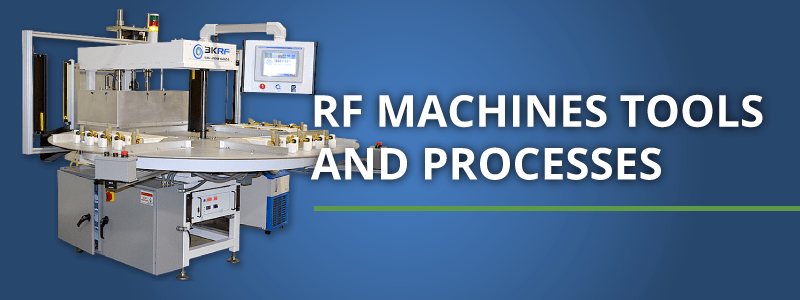Types of RF Welding Machines, Tools and Processes
RF Welding Tooling
Radio frequency welding machines come in a variety of equipment in a variety of power ranges, sizes and shapes. The choice of tooling depends on the type of product slated for manufacture and the quantity of product desires. The types and sizes of RF machines depend on the tool contact area and the thickness of the materials. Tool makers use brass, steel and aluminum to create dies used in radio frequency welding. The type of die chosen for your project will depend on a variety of factors, including cost, design complexity and durability. Steel die cost less but are prone to rusting and arc pits and are difficult to repair.
Brass dies cost more but have high durability and are easy to repair. Aluminum dies — sometimes called magnesium dies — are low-cost tools that are easy to fabricate. They work well for complex patterns but require more power than brass tools in order to achieve similar bond strengths.
Request A Quote Click to Call 516.208.6824
Radio Frequency (RF) Machine Processes
During the manufacturing process, the operator positions two sections of the material that require the table press, which applies pressure to the surface area of the materials. Driven by dies, when the sealing process occurs, the table press comes together and RF waves are transmitted through the small area between the table and die — where the sealing takes place. The radio frequency excites the molecules, which move around and become hot. Applying heat and pressure helps mold the pieces in the die.
- Textile Sealing — The most commonly used feature of RF welding, textile sealing offers the flexibility needed to ensure the functionality of the product. It is also the strongest and most durable seam possible for flexible products. The process employs radio frequency welding to soften the molecules in the materials and reconfigure them. The next step requires the use of pressure to fuse the materials back together to create a big, one-piece seam that is just as strong or stronger than the original piece.
- Sealing Tape — This option provides an effective method of RF welding that uses a separate layer of urethane positioned between the two non-RF weldable materials. Typical in the form of tape and should only be used as a last option. The placement and positioning of the urethane tape between the materials make this process labor intensive resulting in high labor costs
Radio frequency welding processes have multiple operating variables that include RF field frequency, down-stroke pressure, power and cycle time. Experienced RF welding operators understand the factors that enable them to achieve superior welds for the same material combinations using a wide range of settings.
Contact MarkPeri
Questions about choosing the right material for your rf welding application? Contact a member of the MarkPeri team today!

